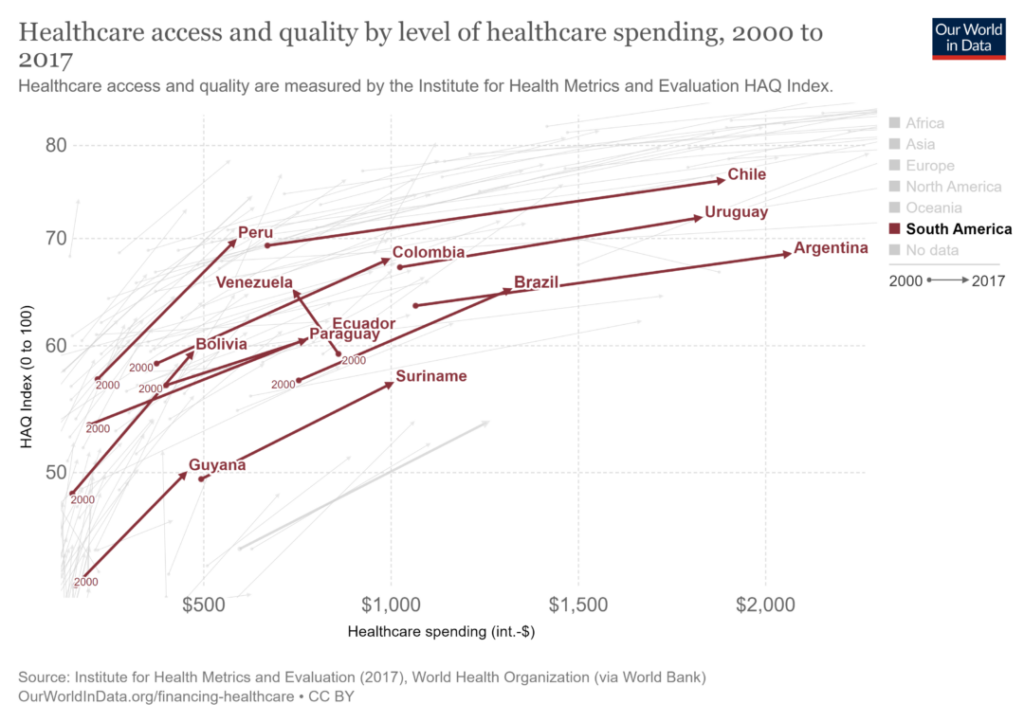
A counterproductive health reform for the country is underway in the Congress of the Republic. The reform destroys everything that has been achieved in the last three decades and puts at risk the financial sustainability and quality of public health. There is much room for improvement in our current system, but this reform is a terrible alternative.
In this note I only want to touch on one of the points for which I can offer some scientific evidence of its inconvenience: the elimination of the current menu of contracts for the provision of health services between insurers and providers as a consequence of the elimination of the insurance system and the nationalization of the system. Scientific evidence is the sine qua non condition for the good design of public policies, a condition absent in the proposed reform.
The theory of optimal contracts between insurers and providers in the presence of information asymmetries (e.g., the provider has private information on the true cost, quality of service provision and health status of the individual) suggests that optimal contracts are those in which the provider receives a fixed payment plus a proportion of the costs of service provision.* That is, in essence, the near-optimal contract partially shares the financial risk between the insurer and the service provider. In practice, two extreme cases of contracting forms can be observed in the Colombian system. On the one hand, fee-for-service contracts and, on the other, capitation contracts. The former lacks any incentive for cost containment and, ceteris paribus, for the provision of quality services. On the other hand, capitation contracts transfer the financial risk to the providers, encouraging them to rationalize spending and the long-term efficiency derived from the provision of quality services. It is worth mentioning that risk sharing in a productive chain is a way of internalizing externalities (risks) that emulates vertical integration. The latter, an organizational structure for which there is very little evidence in Colombia about its implications in the public health sector, but which has been questioned without further study by reformers of the system. Beyond the financial impact of these contracting mechanisms, in this note we highlight the implications related to the impact on the health of Colombians..
In 2015, together with Juan Esteban Carranza and Natalia Serna, we conducted a study: Market power, contracts and health outcomes in the Colombian health system between 2009 and 2011. In brief:
"This article studies the types of contracts between insurers and health care providers in Colombia. Specifically, we study their relationship with the health outcomes of their users based on a database containing the universe of users of the Colombian contributory health care system. The two most prevalent types of contracts in the data are capitation and fee-for-service contracts, which distribute risk and incentives in opposite ways between the insurer and the service provider. Statistical analysis shows that capitation contracts are associated with lower ED return rates and lower relapse rates than fee-for-service contracts,, which is consistent with asymmetric information contract theory. Additionally, there is evidence that the market power of the insurer or service provider is associated with the choice of contract type."
The Banco de la Republica has recently published a Blog, explaining in a simple way the main ideas of the methodology and results presented in the article: Payments for health services and provider incentives..
Finally, I would like to point out that in October of last year I wrote, together with Professor David Bardey of the Universidad de los Andes, an analysis of what the reform seemed to be about. That analysis is still fully valid:
Get information about Data Science, Artificial Intelligence, Machine Learning and more.
In the Blog articles, you will find the latest news, publications, studies and articles of current interest.